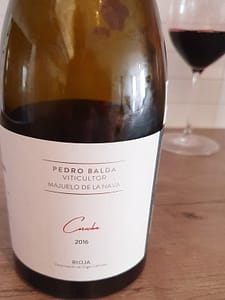There are many different dessert and fortified wines. This one is very little known, but I don’t understand why. It’s a moderately sweet wine that pairs well with typical Christmas fruit cakes like panettone and pandoro. The category is ratafia, elaborated throughout the Mediterranean, but this specific wine belongs to the sub-category Ratafia de Champagne (or: Champenois). It was my contribution to a blind tasting session in the local wine club, and one of the highlights of the evening.
The term “ratafia” can be used in about three different products; some may know the almond biscuit and the liqueur. The dessert wine has seen a solid upturn in recent years, and there are now at least 120 producers of ratafia in Champagne.
An anecdote explains that the name is supposed to have come from Catalunya, where three bishops are said to have argued fiercely, but finally reached an agreement. They wanted to celebrate this with a toast, and got some wine from a local farmer. As his drink had no name, they suggested “rata fiat” (Lat. ‘it is signed’), the last words of the document they had drawn up.
The wine is fortified, but it’s not marked by alcohol,. It’s fresh, and not overtly sweet. The basis are organically grown 1 cru chardonnay grapes from Montagne de Reims. They were manually harvested in october 2013. The alcoholic fermentation was blocked by adding distilled wine (marc). It was then aged for 7 years in wooden casks of 400 and 600 liters. The wine clocks in at 18% alcohol and 100 g sugar.
Vilmart & Cie is a récoltant-manipulant (RM) in Rilly-la-Montagne, just outside the city of Reims. They are now in their 5th generation and grow their grapes organically.

Ratafia Chardonnay (Vilmart)
Golden colour. Fresh aroma of mature lemons, candid apricots, menthol. Medium-bodied with good concentration, fresh acidity and a natural/integrated sweetness reminiscent of acacia honey. Great length and balance. Inspiring.
Price: Medium
Leave a Comment









